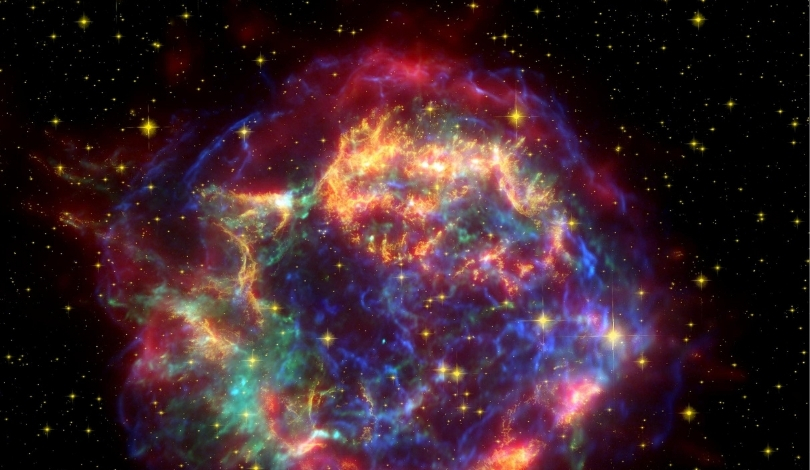Earth’s abundant water has long intrigued scientists, prompting extensive research into its origins. While traditional theories emphasize delivery by asteroids and comets or retention from the planet’s formation, new insights suggest an additional source: the solar wind. This steady stream of charged particles from the Sun might have played a role in forming water molecules on other celestial bodies before being delivered to Earth through impacts.
Past studies have predominantly focused on extraterrestrial delivery through icy comets and water-rich asteroids. The current research builds on these findings by exploring how solar wind interactions with minerals could generate water directly in space, offering a complementary mechanism for Earth’s hydration.
How Does the Solar Wind Create Water on Minerals?
The research, published in The Astrophysical Journal, indicates that when the solar wind’s hydrogen ions collide with oxygen-containing minerals, water molecules are formed. Laboratory experiments tested various minerals exposed to conditions mimicking the solar wind, resulting in measurable water production.
Can This Water Be Transported to Earth?
Yes, the study suggests that water created on asteroids and other rocky bodies could adhere to their surfaces and later be delivered to Earth via impacts. This mechanism provides a plausible pathway for substantial amounts of water to reach our planet over geological timescales.
What Implications Does This Have for Exoplanets?
If solar wind can generate water on asteroids, a similar process might occur on exoplanets, potentially contributing to their habitability. This expands our understanding of how common water-bearing planets might be in the universe.
“To investigate the process of water formation on the surface of oxidic materials and water abundances, we used the technique of surface bombardment with hydrogen or deuterium atoms and ions,”
researchers detailed in their study.
The experiments utilized advanced spectrometry techniques like Fourier-transform infrared spectrometry (FTIR) and temperature-programmed desorption (TPD) to detect and measure water production. The findings demonstrate that solar wind interactions can reliably produce water molecules on mineral surfaces under the right conditions.
“The stellar wind irradiation of rocky oxygen-containing minerals results in a reaction between H+ ions and silicate minerals to produce water and OH, which could explain the presence of water in the regoliths of airless worlds such as the Moon, as well as the water abundances in asteroids,”
the authors explained.
This study complements existing theories by adding a new dimension to our understanding of water’s cosmic origins. It underscores the multifaceted processes that contribute to Earth’s water reservoir, potentially applicable to other planetary systems.
While the solar wind cannot directly create water on Earth due to atmospheric shielding, its ability to generate water on other bodies and subsequently deliver it via impacts presents a significant piece of the puzzle. This research not only advances our knowledge of Earth’s water sources but also has broader implications for the distribution of water across the galaxy.
“This scenario is also applicable to the origin of water on Earth. Due to this effect, a water molecule can be adsorbed on the surface of oxygen-containing particles and then transported over long distances and times,”
the team concluded.
Understanding the various pathways through which water can form and be transported in space is crucial for comprehending the prevalence of habitable environments beyond our planet. This research opens new avenues for exploring the interconnectedness of solar phenomena and planetary hydration.
- Solar wind may have helped form Earth’s water.
- Water was created on asteroids and delivered via impacts.
- Findings impact our understanding of exoplanet habitability.










